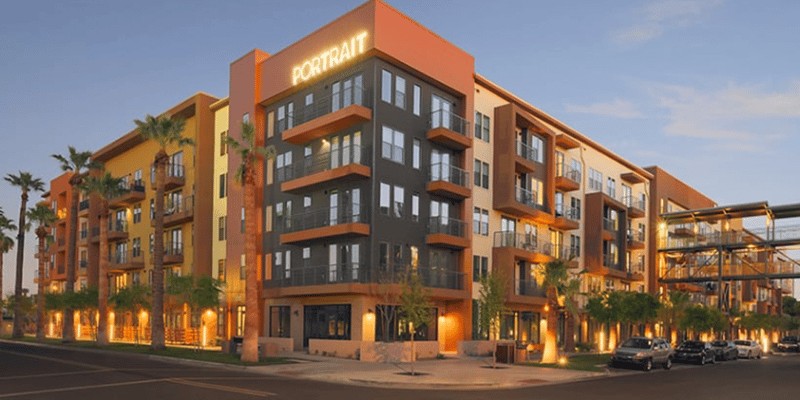Multi-Family Property Investment: A Comprehensive Guide for Success
Multi-family property investment is one of the most lucrative and stable avenues in the real estate market. Unlike single-family homes, multi-family units offer the advantage of multiple income streams, greater cash flow potential, and the ability to scale your investments. If you’re considering diversifying your real estate portfolio or entering the world of multi-family investing, this guide will walk you through everything you need to know about the benefits, strategies, and important factors to consider.

What is Multi-Family Property Investment?
Multi-family property investment refers to the purchase and management of real estate properties that consist of more than one residential unit. These can range from duplexes to larger apartment buildings. The key feature of these investments is the ability to generate multiple rental incomes from one property, making them an attractive option for investors seeking to scale quickly.
Types of Multi-Family Properties
- Duplex – A property with two separate residential units.
- Triplex and Fourplex – Properties with three or four units respectively.
- Small to Mid-Sized Apartments – Properties with 5 to 100 units.
- Large Apartment Complexes – Larger properties with over 100 units.
Each type comes with its own investment strategy, cash flow potential, and management complexity.
Why Invest in Multi-Family Properties?
Multi-family real estate offers several advantages over other types of investment properties. These advantages are what make them particularly attractive to both beginner and seasoned investors.
1. Consistent Cash Flow
One of the most appealing aspects of multi-family properties is the steady income stream they provide. Unlike single-family homes, where income is dependent on one tenant, multi-family properties have the potential to generate revenue from multiple units. Even if one unit becomes vacant, the others can still cover the expenses and provide cash flow.
2. Economies of Scale
Managing multiple units in one location reduces operational costs. The maintenance, repairs, and property management fees are often more affordable when applied to a multi-family building. For example, instead of maintaining separate HVAC systems for each unit in different buildings, you can manage one system for the entire property.
3. Appreciation Potential
Multi-family properties tend to appreciate in value faster than single-family homes, especially in growing urban areas. Additionally, investors can increase property value by improving the property, raising rents, or optimizing occupancy rates. Market demand for multi-family properties in urban centers is often high, which drives property value growth.
4. Diversification of Risk
The risk associated with a multi-family property is spread across multiple tenants. If one tenant vacates, you are not reliant on that single rental income. This diversification of income sources makes multi-family investing less risky compared to single-family homes, especially when market conditions fluctuate.

5. Leverage Financing Options
Multi-family properties allow investors to secure favorable financing. Lenders are generally more inclined to offer loans for multi-family properties, especially those with five or more units. This is because the consistent income stream and lower risk associated with multi-family properties make them more attractive to lenders.
How to Get Started with Multi-Family Property Investment
Investing in multi-family properties requires careful planning and strategy. Below is a step-by-step guide to help you get started:
1. Set Investment Goals
Before diving into the multi-family market, it’s important to define your investment goals. Are you looking for long-term cash flow, appreciation, or a mix of both? Understanding your objectives will help you identify the right types of properties and financing options for your investment.
2. Research the Market
Conduct thorough research on the market where you plan to invest. Factors like population growth, employment rates, and local rental demand are critical in determining whether a specific market is a good fit for your multi-family investment.
- Emerging Markets: Look for cities or neighborhoods showing signs of rapid growth and urban development.
- Local Regulations: Understand the rental laws, zoning restrictions, and other regulatory factors in your chosen market.
3. Analyze Potential Properties
When analyzing multi-family properties, you need to assess factors like:
- Cap Rate (Capitalization Rate): A key metric to evaluate the potential return on an investment.
- Cash Flow: Ensure the property generates positive cash flow after accounting for expenses, including mortgage, insurance, taxes, and maintenance costs.
- Occupancy Rate: A higher occupancy rate typically indicates higher demand for rental properties in the area.
4. Secure Financing
Financing a multi-family property can be different from financing a single-family home. Lenders often require a higher down payment, especially for properties with more than four units. Consider your financing options carefully:
- Conventional Loans
- FHA Loans (for smaller multi-family properties)
- Commercial Loans (for larger apartment buildings)
5. Hire a Property Manager
If you don’t have the time or expertise to manage a multi-family property, it may be beneficial to hire a property manager. They can handle tenant relations, maintenance, and other day-to-day tasks, allowing you to focus on growing your portfolio.

Risks and Challenges of Multi-Family Property Investment
While multi-family properties offer numerous benefits, there are also risks involved. Understanding these risks will help you mitigate them effectively:
1. Tenant Turnover
Even with multiple units, there may be periods where units sit vacant. Tenant turnover can disrupt your cash flow, so it’s important to have a contingency plan in place. Consider investing in areas with high demand for rental properties to reduce vacancies.
2. Management Complexity
Managing a larger property with multiple tenants can become complex. You may encounter issues like non-payment of rent, maintenance problems, or tenant disputes. This is why having a professional property management company can be crucial for reducing the time and effort involved in handling these issues.
3. Capital Expenditure Costs
Multi-family properties typically require more capital for upkeep, including repairs to common areas and major systems (HVAC, plumbing, etc.). Be prepared to set aside a reserve fund to handle large repair costs and keep the property in good condition.
4. Market Conditions
While multi-family properties tend to be more stable than other types of real estate, they are still subject to market conditions. Economic downturns, changes in interest rates, and local market shifts can affect property values and rental rates.
FAQs About Multi-Family Property Investment
1. What is the minimum number of units for a multi-family property?
A property with two to four units is generally considered a multi-family property, though some investors only consider buildings with five or more units as true multi-family investments.
2. Is it better to buy a new or older multi-family property?
Both new and older multi-family properties offer benefits. Newer properties often require less immediate maintenance but may come at a premium price. Older properties might offer a better price point but could require more extensive repairs or renovations. The decision depends on your budget and investment strategy.
3. What should I look for when buying a multi-family property?
Key factors to consider include the location, condition of the property, potential rental income, occupancy rate, and the overall financial performance of the building. It’s also important to assess the local market demand and the future growth potential of the area.
4. How can I finance a multi-family property?
Multi-family properties can be financed through conventional loans, FHA loans (for smaller properties), or commercial loans (for larger properties). It’s important to compare your options and ensure that the financing terms align with your investment goals.
Conclusion
Multi-family property investment is an excellent opportunity for investors seeking to grow their wealth, create passive income, and build long-term financial security. With the potential for consistent cash flow, high returns, and diversified risk, multi-family properties offer a stable foundation for investors who are looking to scale their portfolios.
By understanding the various types of multi-family properties, conducting thorough market research, and securing the right financing, you can begin your journey toward successful multi-family property investments. However, always remember that due diligence, ongoing management, and professional support are crucial to maximizing your returns and minimizing risks.
For more resources on real estate investing, visit Investopedia and explore the world of multi-family property investment.
Ready to invest in multi-family properties? Start your journey today and unlock the potential of a growing, cash-flowing real estate portfolio!

